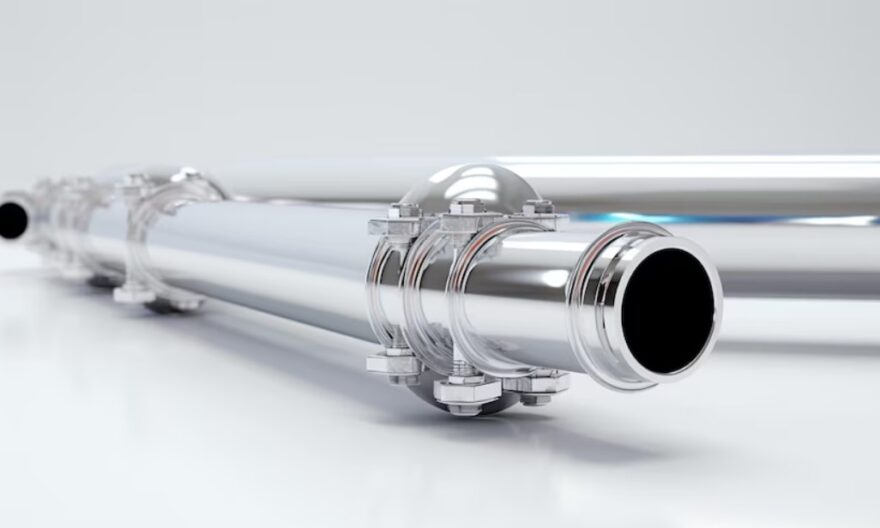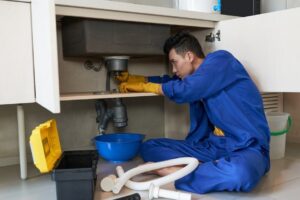
Stainless steel pipes are a favourite among DIY enthusiasts. They offer durability, resistance to corrosion, and a sleek modern look. These pipes are perfect for various projects, from plumbing systems to custom furniture.
Why Choose Stainless Steel Pipes?
- Longevity: Stainless steel withstands harsh conditions without rusting or corroding.
- Aesthetics: Its shiny, clean appearance fits modern and industrial designs.
- Versatility: You can use these pipes indoors and outdoors for countless projects.
Common Types and Their Uses
- 304 Stainless Steel: Ideal for indoor projects as it resists most oxidization.
- 316 Stainless Steel: Suited for outdoor use, especially in salty environments near the ocean.
Preparing for Your Stainless Steel Pipe Installation Project
Proper preparation is key to the success of your DIY project. You need to gather the right tools and know safety procedures.
Essential Tools and Materials
You will need:
- Tape measure and marker for accurate measurements
- Pipe cutter or hacksaw to cut pipes
- Safety goggles and gloves for protection
Safety Measures
Before you start, remember to:
- Wear protective gear to avoid injuries.
- Work in a well-ventilated area when cutting or soldering pipes.
- Keep your workspace clean and organized to prevent accidents.
Measuring and Cutting Stainless Steel Pipes with Precision
Accurate measurement and cutting are crucial to avoid waste and ensure that your project fits together perfectly.
How to Measure Stainless Steel Pipes
- Use a tape measure to determine the length you need.
- Mark the pipe at the required length with a marker.
- Double-check your measurements before cutting.
Techniques and Tools for Cutting
To cut stainless steel pipes:
- Secure the pipe in a vice to prevent it from moving.
- Use a pipe cutter or hacksaw to cut the pipe at the mark.
- Rotate the pipe slowly as you cut to ensure a straight edge.
Deburring and Cleaning Pipes After Cutting
After cutting your stainless steel pipe, it’s important to deburr and clean them. This step ensures smooth edges and prepares the pipes for installation.
Importance of Deburring
Deburring removes sharp edges that could cause injury or damage to other components. It also helps to:
- Prevent cracks and fractures in the pipe
- Ensure a tight fit in connections
How to Deburr Stainless Steel Pipes
- Use a deburring tool to smooth the edges inside and outside of the cut.
- Run the tool around the edge in a circular motion.
- Check the edge with your finger to make sure it is smooth.
Cleaning Stainless Steel Pipes
Before installation, cleaning the pipes is essential to remove any debris, dust, or grease. This helps to:
- Improve the effectiveness of connections
- Prevent contamination in plumbing projects
Here’s how to clean the pipes:
- Wipe the pipe with a clean, soft cloth.
- Use mild soap and water for any greasy spots.
- Dry the pipe thoroughly to prevent water spots.
Connecting Stainless Steel Pipes: Various Techniques and Their Applications
Connecting stainless steel pipes correctly is vital for a secure and efficient system. Different techniques suit different project needs. Let’s explore these methods and their best applications.
Using Threaded Connections for Pipe Installations
Threaded connections are among the most common methods for joining stainless steel pipes. This approach is simple and effective.
- What You Need: Threaded pipes, matching fittings, thread seal tape.
- Process:
- Wrap thread seal tape around the male threads to ensure a tight seal.
- Screw the pipe into the corresponding stainless steel fitting by hand and then tighten them with a wrench.
- Best For: Small-scale projects and repairs where pipes need frequent disassembly.
Soldering and Welding Stainless Steel Pipes
For a permanent and strong bond, soldering and welding are excellent choices.
- Soldering:
- Clean the pipe ends and apply flux.
- Heat the joint and apply solder to bond the pipes.
- Let it cool for a strong seal.
- Best For: Joining pipes in non-pressurized systems like drainage.
- Welding:
- Clean the pipe ends and prepare your welding machine.
- Weld around the joint.
- Allow it to cool.
- Best For: High-pressure systems and structural applications.
Press-Fit Systems: Simplifying Connections
Press-fit technology offers a quick and reliable method to connect pipes without welding or soldering.
- Process:
- Cut and deburr the pipes.
- Mark the depth for insertion.
- Push the pipe into the stainless steel fitting and use a press-fit tool to secure it.
- Best For: Commercial and residential water systems due to their efficiency and reliability.
Bending Stainless Steel Pipes for Custom Installations
Properly bending stainless steel pipes can help you fit pipes in tight spaces and create custom designs.
Tools and Techniques for Bending Pipes
Using the right tools is essential for smooth bends without damaging the pipes.
- Using a Pipe Bender:
- Insert the pipe into the bender.
- Align the desired bend angle.
- Apply pressure to achieve the bend.
- Best For: Precise bends in thin-walled pipes.
- Using a Mandrel Bender:
- Insert the pipe and a mandrel inside it.
- Bend the pipe with the machine.
- Remove the mandrel after bending.
- Best For: Thick-walled pipes needing tight radii without collapsing.
Tips for Achieving Precise Bends
- Practice on scrap pieces first.
- Measure and mark the bend points accurately.
- Support the pipe along the entire bend to prevent kinks.
Avoiding Common Mistakes in Stainless Steel Pipe Installation
Awareness of potential pitfalls enhances the quality and durability of your installation.
Common Pitfalls and How to Avoid Them
- Not Measuring Correctly: Always double-check measurements before cutting.
- Over-Tightening Fittings: This can strip threads. Tighten until firm, then give a slight final turn.
- Ignoring Cleaning and Deburring: Always clean and deburr pipes to prevent leaks and ensure a perfect fit.
Maintaining and Troubleshooting Your Stainless Steel Pipe Installations
Regular maintenance keeps your stainless steel pipe system performing well. Troubleshooting common issues helps prevent major problems.
Maintenance Tips for Stainless Steel Pipes
- Regular Inspections: Check for signs of wear, leaks, or corrosion.
- Cleaning: Wipe external surfaces with a damp cloth and mild detergent.
- Tightening Connections: Annually check and tighten any loose fittings.
Troubleshooting Common Issues
- Leaks:
- Identify the source.
- If at a joint, tighten the stainless steel fitting or replace the seal.
- If the pipe is damaged, replace the affected section.
- Corrosion:
- Look for discolouration or rust.
- Clean the area and apply a corrosion-resistant coating.
- Replace the pipe if corrosion is widespread.
- Clogs:
- Use a plumber’s snake or a high-pressure water jet to clear blockages.
- Check for bends or squashed sections where clogs may occur.



